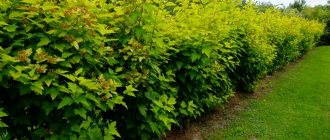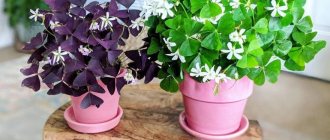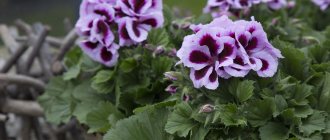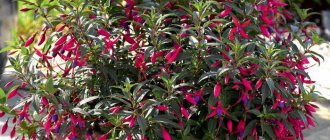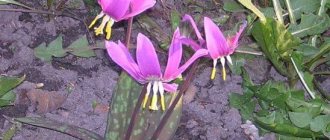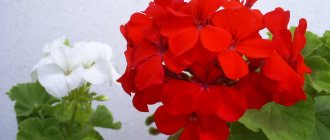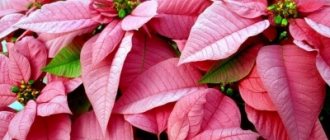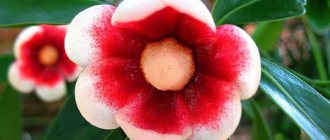Author: Natalya Category: Garden plants Published: February 21, 2019Republished: February 21, 2019Last edits: November 7, 2020
- When to plant
- Growing conditions
- Nemesia floribunda
Nemesia (lat. Nemesia) is a genus of herbaceous plants and shrubs of the Norichnikov family, which includes approximately 50 species of annuals and perennials, most of which grow in the bush and coastal regions of South Africa. The plant received its scientific name in honor of the Greek goddess of retribution, Nemesis.
Planting and caring for nemesia
- Flowering: from June to frost.
- Planting: sowing seeds for seedlings - at the end of March, planting seedlings in open ground - at the end of May or early June.
- Lighting: bright sunlight.
- Soil: well-drained, moderately moist, neutral or slightly acidic soil of average fertility.
- Watering: regular, moderate, in hot weather and drought - more frequent and abundant.
- Fertilizing: 2-3 times per season with complex mineral or liquid organic fertilizers.
- Pinching: regular.
- Reproduction: seed.
- Pests: spider mites.
- Diseases: with excessive watering - fungal infections.
Read more about growing nemesia below.
Main pests and diseases
Nemesia can be attacked by spider mites. Since these pests drink the sap of plants, a sticky liquid appears on the leaf, after which the greenery can dry out and the bush withers. To get rid of this parasite, drugs of the acaricidal group - Actellik, Akarin - are suitable.
Another common plant disease is fungus. This happens because the flower consumes moisture quite intensively.
Note!
If a fungus is suddenly found on the plant, you should water it less often. It is necessary to ensure that the top layer of soil dries out.
After this, fungicides are applied one or more times, depending on the intensity of the damage to the bush.
As soon as the plant passes its first peak of flowering, it is advisable to trim off the dried shoots. In this case, the plant will thank its owner with repeated abundant flowering. Only with proper care of the plant can you expect that it will delight everyone with its extraordinary beauty.
Botanical description
The nemesia plant reaches a height of 30 to 60 cm. The stems of nemesia are tetrahedral, branched, sometimes pubescent, bending over time under the weight of the inflorescences and linear or lanceolate, opposite, serrated along the edges of the leaves. Numerous axillary flowers, solitary or collected in apical inflorescences, consist of a tubular corolla with labiform limbs: the upper quadripartite and the lower dicotyledon. The color of the flowers is varied.
The fruit is a capsule with a large number of black elongated seeds in whitish arils. Nemesia seeds remain viable for up to 2 years.
Despite the fact that garden nemesia is represented by both annual and perennial species, in temperate climates it is grown as an annual crop.
- Krinum: cultivation and care, types and varieties
Growing nemesia from seeds
Sowing seedlings
Nemesia is planted by seeds, cuttings and dividing the bush, but since the long roots of the plant are easily damaged when dividing, it is best to grow nemesia by seed seedlings.
Seeds purchased in a store or collected with one’s own hands are sown at the end of March in seedling containers filled with a loose, moisture-intensive substrate for flower crops, or in a mixture of peat and sand, on which a layer of snow is laid: on white snow, small black seeds are clearly visible and are easier to distribute over surfaces evenly.
The crops are covered with glass or transparent film and kept in a bright place at a temperature of 20 ºC, ventilated daily. The first shoots of nemesia should appear in 10-14 days.
Seedling care
With the beginning of mass germination of seeds, the container with the crops is exposed to bright, diffused light, and the temperature is lowered to 8-10 ºC. This is done so that the nemesia seedlings do not stretch. A week after the emergence of seedlings, the soil is watered with a solution of complex fertilizer in a weak concentration. Caring for seedlings consists of watering and carefully loosening the soil.
3-4 weeks after sowing, at the stage of development of the seedlings with two or three true leaves, the seedlings are planted in separate cups or pots, and the room temperature is maintained at 13 ºC. Make sure that the substrate in the cups does not dry out. Two weeks before planting in the garden, seedlings begin to harden.
Growing nemesia at home
Actually, nemesia is grown at home only during the seedling period, and then it is planted in open ground or transferred to a balcony or veranda.
- Hydrangea paniculata
How to grow nemesia for landscaping a balcony, veranda or terrace? If you do not intend to keep nemesia in the garden, you can sow the seeds in February. The planting procedure and maintenance conditions are absolutely the same as for seedlings, but instead of picking into cups, nemesia is planted in containers or pots, which, when warmer, are taken out to the balcony, veranda or terrace.
Use in ornamental gardening
Good decorative qualities allow us to call nemesia a universal flower.
It looks impressive in group plantings, in the front row of flower beds and along paths. Nemesia has also proven itself excellent as a balcony plant and goes well with petunia, marigolds and ageratum.
It can also be planted in flowerpots, tubs and grown as a houseplant.
There is also a place for it in a rock garden - among the stones, nemesia will look very natural.
With the onset of autumn, collect seeds from the flowers you like so that in the new year you can again enjoy the magnificent view of a blooming garden.
Planting nemesia in open ground
When to plant
Nemesia seedlings are planted in open ground after warm weather has established, when the threat of frost has passed: at the end of May or at the beginning of June. An open, ventilated, sunny area with well-drained, moist soil of average fertility with a neutral or slightly acidic reaction is suitable for nemesis. Nemesia also grows well in light lacy partial shade.
How to plant
To plant seedlings, prepare holes of such depth that the root system of the seedling along with a lump of earth can fit in them. The distance between plants should be 20-30 cm, since nemesia bushes slightly fall apart. After planting and embedding, the seedlings are watered, and after the water is absorbed, the area is mulched to protect the soil from rapid evaporation of moisture.
Nemesia from seeds will bloom in late June or early July.
Use in landscape design
Nemesia is a ground cover plant. In a short time it forms a beautifully flowering carpet. The culture looks great on alpine hills, in rock gardens and mixborders, as well as along paths. The plant combines with low-growing annuals:
- pansies;
- marigolds;
- lobelia;
- petunia.
Nemesia, planting and caring for which is not difficult, can be grown even by a novice gardener. By choosing the varieties you like, you can turn your garden plot into a piece of paradise in a short time. And if you follow agrotechnical rules, the ornamental plant will delight you with flowering throughout the warm period.
Caring for nemesia
Growing conditions
Planting and caring for nemesia is not labor intensive. In order for the plant to bush, the tops of its shoots are regularly pinched. During the season, you will have to water the nemesia, especially in dry weather, weed the weeds and loosen the soil around the bushes.
Nemesia flowers are fed 2-3 times during the season with complex mineral fertilizer, for example, Kemira Lux. Nemesia favorably accepts in open ground and organic fertilizers.
Pests and diseases
Due to the fact that nemesia loves moisture very much, it is susceptible to fungal diseases. To avoid damage to nemesia by fungi, water the plant moderately, allowing the top layer of soil to dry out, but if the plant still becomes sick, treat it with a fungicide solution.
- Ginseng: cultivation, properties and types
Among insects, nemesia in open ground can suffer from spider mites that feed on the cell sap of plants, and if you find the thinnest sticky web on the bushes or drying and falling leaves, take immediate action: treat the plants and the soil around them with a solution of Akarina, Actellika, Karate, Fitoverma or any other acaricide.
Nemesia after flowering
When the first wave of flowering has subsided, the ends of the shoots of nemesia with faded inflorescences should be cut off, and soon, with proper care, new shoots will appear from the axils of the leaves, which will bloom after a while.
Possible problems in growing
Nemesia is an unpretentious flower that can grow in all corners of Russia. But if agricultural practices are not followed, diseases and pests may appear on the bush.
Nemesia is a moisture-loving crop, so root rot and other fungal diseases often appear on it. It is difficult to get rid of such diseases, therefore, to prevent the flower from infecting neighboring crops, it is dug up and burned.
On a note! As a preventative measure, the flowering crop is sprayed with broad-spectrum fungicides.
Sometimes flowers are affected by spider mites and other insect pests. Therefore, it is necessary to conduct a weekly visual inspection and begin treatment when the first signs of infection appear. To do this, use insecticides or folk remedies. Treatment is carried out in dry, windless weather, in the evening.
Signs of improper care
Failure to follow the rules of care can lead to negative consequences. Main problems:
- The plant lags behind in growth and development. The reason is depleted soil.
- The root system rots. This means that the plant is watered too often with cold water.
- Short-term flowering. The reason is the lack of pinching and untimely removal of faded inflorescences.
Types and varieties
Among the types of nemesia, there are those that are best grown in the garden, and there are types that can be used to decorate balconies and terraces. We present to you the most popular types and varieties of nemesia in gardening.
Nemesia floribunda
This is a plant reaching a height of 40 cm, the shoots of which are crowned with delicate small pale blue flowers. This species, unfortunately, can rarely be found in culture, although interest in it has been growing over the years.
Nemesia versicolor
A South African species of annual plants with highly branched thin stems up to 25 cm high and medium-sized flowers. Nemesia variegated served as the basis for the development of many hybrids. The most famous varieties:
- Blue Bird is a plant with bright blue flowers with a yellow or white spot on the lip;
- Edelblau - the flowers of this variety are the same color as those of the forget-me-not.
Nemesia strumosa
It is a highly branched annual 35-40 cm high with oval sessile lower leaves and linear upper leaves. The flowers of plants of this species are irregularly shaped, swollen, without spurs, up to 25 mm in diameter, with a drooping throat, red, pink, orange or yellow in color, there are varieties with variegated flowers. The species has been in cultivation since 1892.
The best varieties of the species are:
- Aurora is a plant up to 30 cm high with large scarlet-white flowers;
- Fanfair - a variety with cream and yellow flowers;
- Sparklers - nemesia with two-three-color flowers;
- Fire King - a variety up to 30 cm high with fiery red flowers;
- National Ensign is a well-known variety with red and white flowers.
Hybrid nemesia (Nemesia hybrida)
It combines all varieties of hybrid origin from crossing Nemesia zombie and Nemesia variegated. As a rule, these are annuals from 30 to 60 cm in height with elongated, almost lanceolate leaves, crenate along the edge. Irregularly shaped, large flowers up to 2 cm in diameter with a two-lipped corolla are collected in apical racemose inflorescences.
Hybrid nemesia usually goes on sale in variety mixtures that differ in plant height. For example:
- nemesia Triumph - varieties of various colors up to 15 cm high;
- nemesia Carnival - plants 18-20 cm high in various colors.
Some popular varieties of hybrid nemesia also go on sale:
- nemesia King's Mantle (Cardinal) is a variety that blooms profusely with bright blue flowers with long spurs. The center of the corolla is white, along the edges of the petals there is a blue border;
- Tumbelina is a new variety 15-20 cm high with lavender-blue flowers about 3 cm in diameter.
Sansatia (Nemesia ampelous)
It is a triploid interspecific hybrid obtained in 2009 by German breeders by crossing a perennial and an annual species of nemesia. There are only eight ampel varieties so far. Their color resembles exotic fruits, which is why they received the following names: Lemon, Coconut, Peach, Blackberry, Banana, Pineapple, Mango and Cranberry, and the most popular of these varieties are Lemon, Coconut, Banana, Pineapple and Cranberry, and Mango, Blackberry and Peach have erect peduncles.
